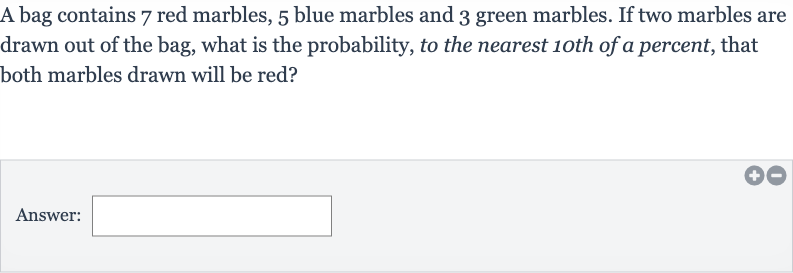AI tutor
Welcome to Bytelearn!
Let’s check out your problem:

A bag contains red marbles, blue marbles and green marbles. If two marbles are drawn out of the bag, what is the probability, to the nearest oth of a percent, that both marbles drawn will be blue?Answer:
Full solution
Q. A bag contains red marbles, blue marbles and green marbles. If two marbles are drawn out of the bag, what is the probability, to the nearest oth of a percent, that both marbles drawn will be blue?Answer:
- Determine Total Marbles: Determine the total number of marbles in the bag.Add the number of red, blue, and green marbles together. red + blue + green = total marbles.
- Calculate First Blue Probability: Calculate the probability of drawing the first blue marble.Since there are blue marbles out of total marbles, the probability of drawing a blue marble first is .
- Calculate Second Blue Probability: Calculate the probability of drawing a second blue marble after the first one has been drawn.Now there are blue marbles left and only marbles total. The probability of drawing a second blue marble is .
- Multiply Probabilities: Multiply the probabilities from Step and Step to find the probability of both events occurring..
- Convert to Percentage: Convert the probability into a percentage. and as a percentage, this is .
- Round to Nearest Tenth: Round the percentage to the nearest tenth of a percent. is already at the nearest tenth of a percent, so no further action is needed.
More problems from Percent error: word problems
QuestionGet tutor help
QuestionGet tutor help
QuestionGet tutor help
QuestionGet tutor help
QuestionGet tutor help
